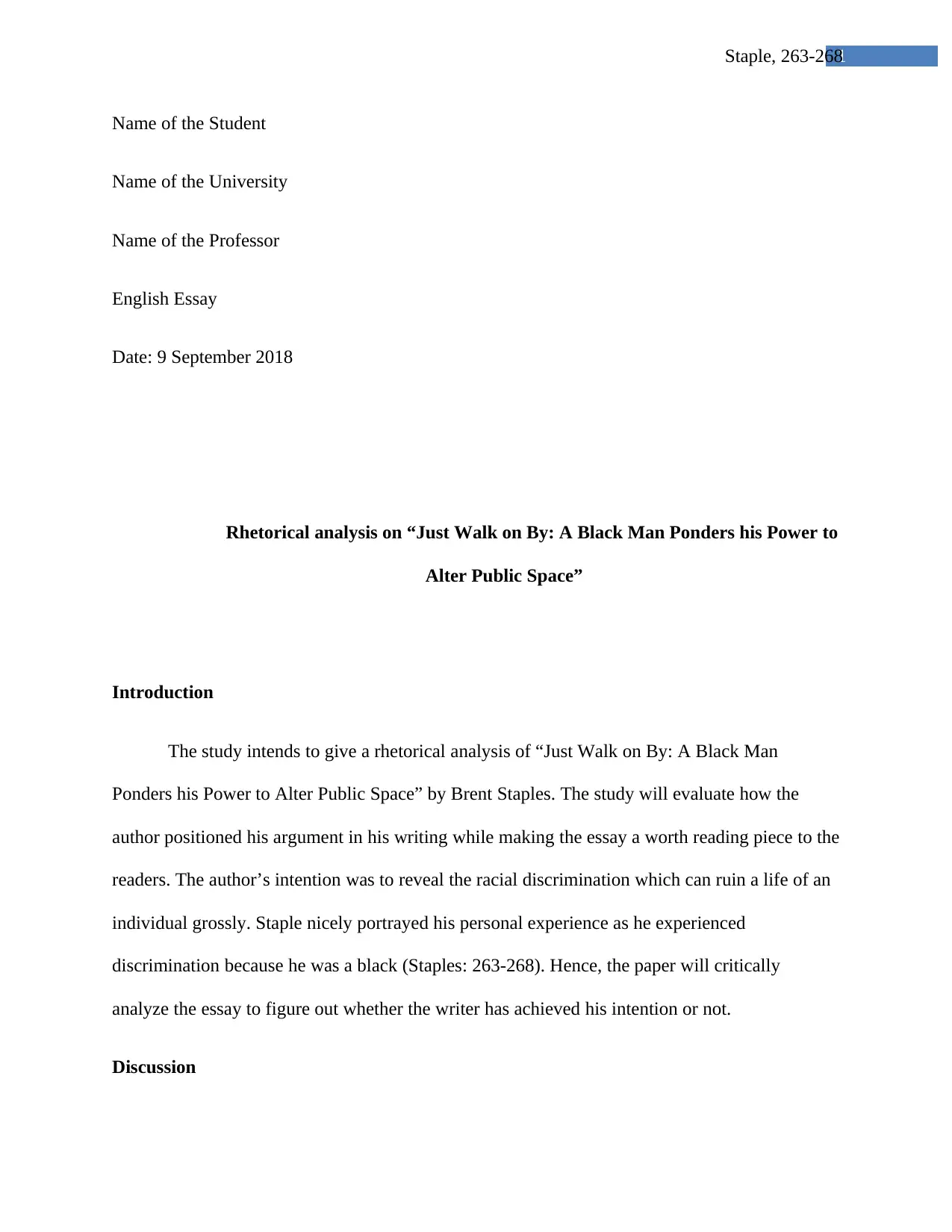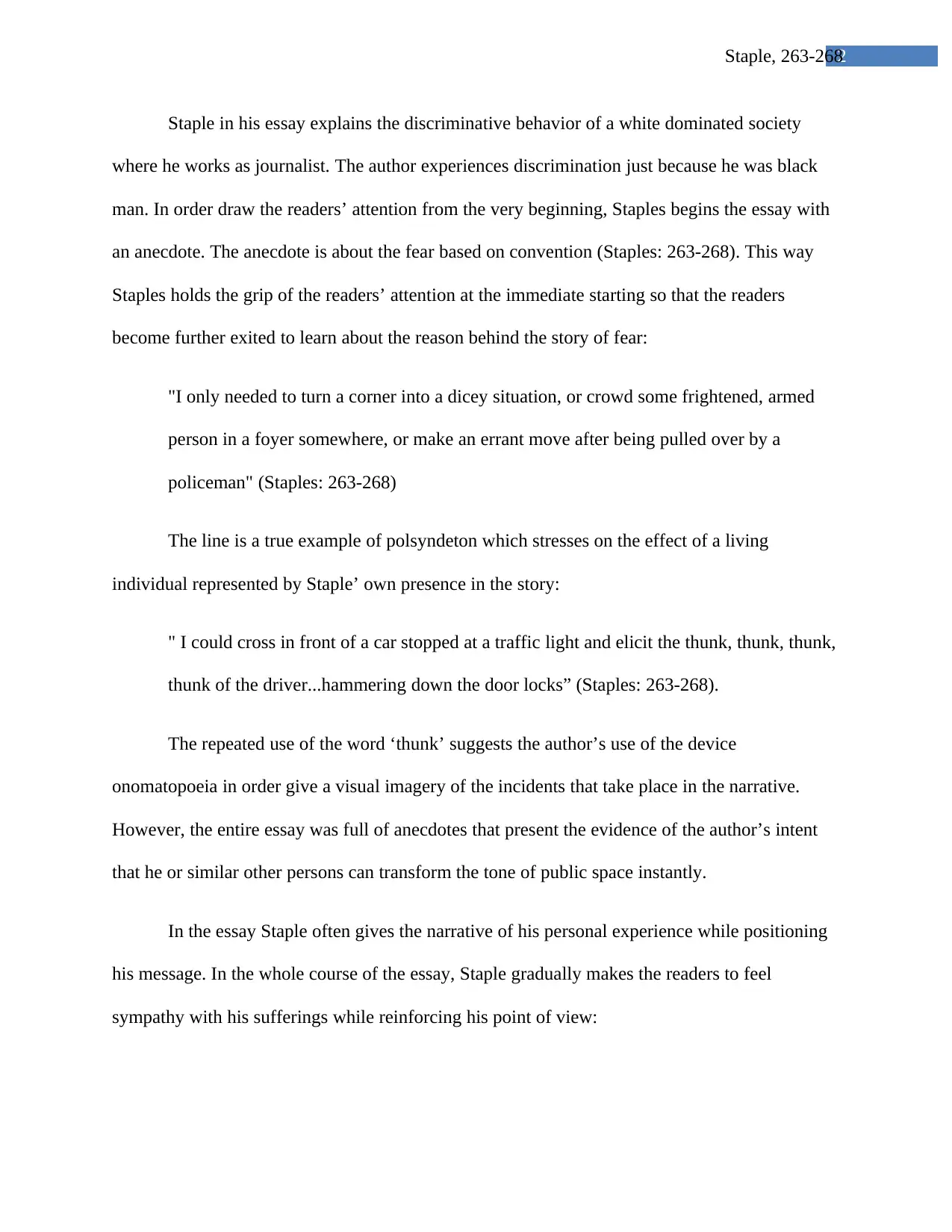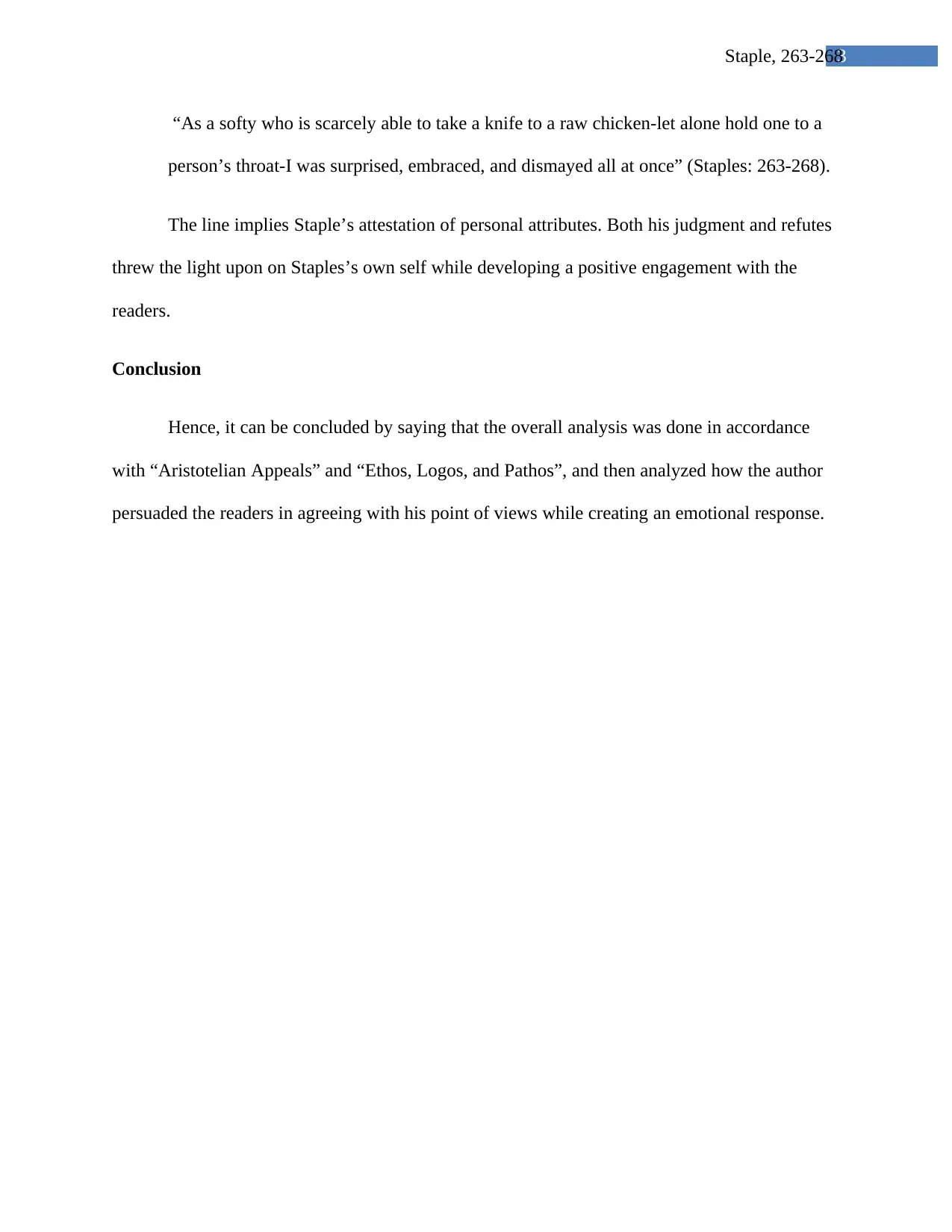Rhetorical Analysis: Brent Staples' Essay on Public Space and Race
VerifiedAdded on 2023/06/07
|4
|656
|276
Essay
AI Summary
This essay presents a rhetorical analysis of Brent Staples' "Just Walk on By: A Black Man Ponders his Power to Alter Public Space," examining how Staples employs rhetorical devices to convey his experiences with racial discrimination and its impact on his life. The analysis focuses on Staples' use of anecdotes, polysyndeton, and onomatopoeia to draw the reader into his narrative and evoke empathy. It explores how Staples' personal experiences and reflections on his own attributes contribute to the persuasiveness of his argument, successfully highlighting the pervasive nature of racial bias and its effects on public perception and personal identity. The essay concludes that Staples effectively uses "Aristotelian Appeals" and "Ethos, Logos, and Pathos" to persuade readers to agree with his point of view while creating an emotional response.
1 out of 4










![[object Object]](/_next/static/media/star-bottom.7253800d.svg)